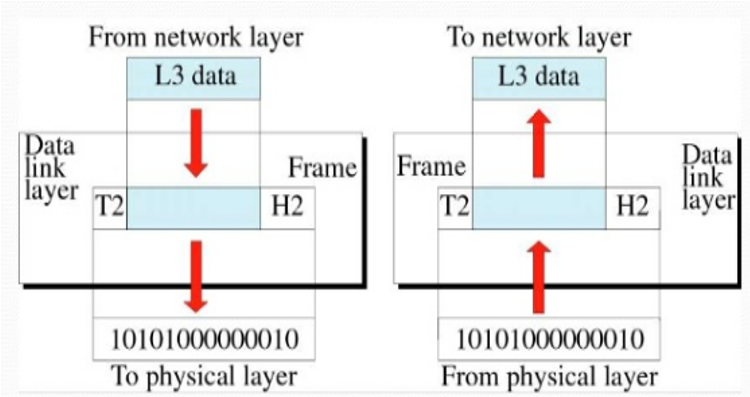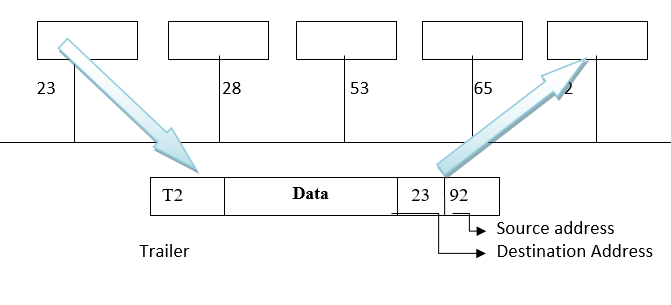Home »
Computer Network
Data Link Layer: What It Is, Sublayers, Design Issues, Functions
Description and Functions of Data Link Layer in the OSI model: In this tutorial, we are going to learn what the Data Link layer is and the Functions of Data Link Layer in the OSI model in Computer Networking? We will also discuss the Design issues with Data Link Layer and the working of Data Link Layer with the help of its diagram and an example.
By Monika Jha Last updated : May 05, 2023
What is Data Link Layer?
The Data Link layer transforms a raw transmission facility into a line that appears free of undetected transmission errors to the network layer and is responsible for node-to-node delivery. It makes error-free the physical layer appear to the upper layer (network layer).
- Data Link Layer is the second layer of OSI Layered Model after Physical Layer.
- When a packet or message reaches to a network, it is the responsibility of Data Link Layer to transmit it to the Host using its MAC address.
- Data Link Layer devices are Switch & Bridges.
Sublayers of Data Link Layer
Data Link Layer has two sublayers:
1. Logical Link Control (LLC)
This is the uppermost sub-layer, LLC consists of protocols running at the top of the data link layer, and also provides flow control, acknowledgment, and error notification. The LLC provides addressing and data link control. It specifies which methods are to be used for addressing channels over the transmission medium and for controlling the data exchanged between the generator of packet and recipient of the message.
2. Media Access Control (MAC)
Who can access the media at any one time, determines by the MAC sublayer(e.g. CSMA/CD).
The packet obtains from the Network layer is further divided into frames depending on the frame size of NIC(Network Interface Card). DLL also encases Sender's and Receiver's MAC address in the header.
An ARP(Address Resolution Protocol) request is placed onto the wire asking "Who has that IP address?" and after getting this message destination host replies with its MAC address. By this, the receiver's MAC address is obtained.
Design Issues with Data Link Layer
The following are the designed issues with data link layer in the OSI Model:
- The issue that arises in the data link layer (and most of the higher layers as well) is the speed mismatch between sender and receiver.
- Some traffic regulation mechanism is often needed to know the exact available free space, the receiver has at the moment. Frequently, the flow regulation and error handling are combined in this layer.
- Here is an additional issue in the data link layer with broadcast networks that is how to control access to the shared channel. The Medium Access Control (MAC), the sub-layer of the data link layer deals with this problem.
Functions of Data Link Layer
The following are the functions of data link layer in the OSI Model:
1. Framing
The data link layer receives the stream of bits from the network layer divides into manageable data units called frames.
2. Physical Addressing
If frames are to be distributed to different stations on the network. To define the physical address of the sender (source address) and/or receiver (destination address) of the frame, the DLL adds a header to the frame.
If the frame is to be sent for a system outside the sender's network. The receiver's address means the address of the device that connects one network to the another.
This figure shows the relationship of the Data link layer to the network and physical layers.

Data Link Layer
3. Flow Control
If the rate at which the data are consumed by the receiver is less than the rate produced by the sender, the data link layer deals with a flow control mechanism to prevent overrun the receiver.
4. Error Control
The data link layer also deals with damaged or lost frames. By adding mechanisms to detect and retransmit lost frames increases reliability. A trailer added to the end of the frame to achieve error control.
5. Access control
When more than two or two devices are connected to the common link, data link layer protocols are necessary to determine which device has control over the link at any point of time.
Example: In this figure, a node with physical address 23 sends a frame to a node with physical address 92. The two nodes connected by a link level. At the link level this frame contains physical (link) addresses in the header.
These are the only addresses needed. The remaining header contains other information that is required at this level. The extra bits needed for error detection contains by the trailer.

Advertisement
Advertisement